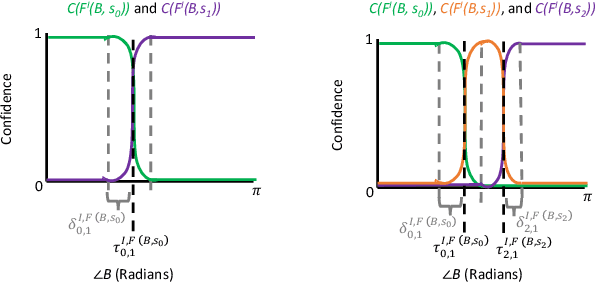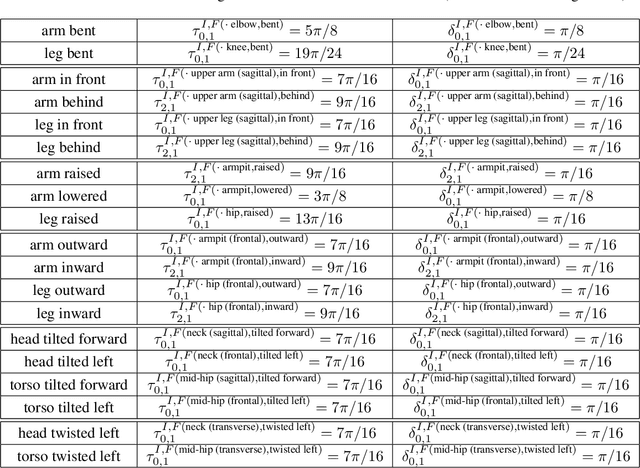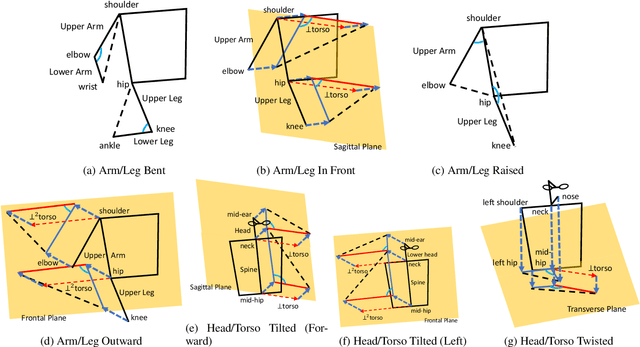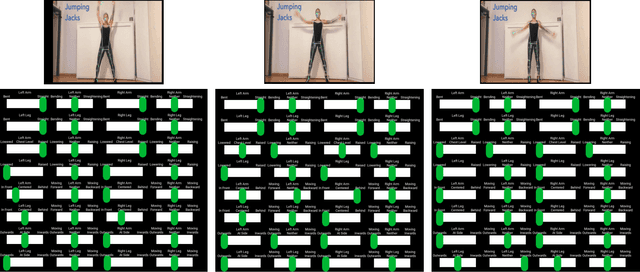Steven Johnston
A Symbolic Representation of Human Posture for Interpretable Learning and Reasoning
Oct 17, 2022



Abstract:Robots that interact with humans in a physical space or application need to think about the person's posture, which typically comes from visual sensors like cameras and infra-red. Artificial intelligence and machine learning algorithms use information from these sensors either directly or after some level of symbolic abstraction, and the latter usually partitions the range of observed values to discretize the continuous signal data. Although these representations have been effective in a variety of algorithms with respect to accuracy and task completion, the underlying models are rarely interpretable, which also makes their outputs more difficult to explain to people who request them. Instead of focusing on the possible sensor values that are familiar to a machine, we introduce a qualitative spatial reasoning approach that describes the human posture in terms that are more familiar to people. This paper explores the derivation of our symbolic representation at two levels of detail and its preliminary use as features for interpretable activity recognition.
A Group-Equivariant Autoencoder for Identifying Spontaneously Broken Symmetries in the Ising Model
Feb 13, 2022Abstract:We introduce the group-equivariant autoencoder (GE-autoencoder) -- a novel deep neural network method that locates phase boundaries in the Ising universality class by determining which symmetries of the Hamiltonian are broken at each temperature. The encoder network of the GE-autoencoder models the order parameter observable associated with the phase transition. The parameters of the GE-autoencoder are constrained such that the encoder is invariant to the subgroup of symmetries that never break; this results in a dramatic reduction in the number of free parameters such that the GE-autoencoder size is independent of the system size. The loss function of the GE-autoencoder includes regularization terms that enforce equivariance to the remaining quotient group of symmetries. We test the GE-autoencoder method on the 2D classical ferromagnetic and antiferromagnetic Ising models, finding that the GE-autoencoder (1) accurately determines which symmetries are broken at each temperature, and (2) estimates the critical temperature with greater accuracy and time-efficiency than a symmetry-agnostic autoencoder, once finite-size scaling analysis is taken into account.
 Add to Chrome
Add to Chrome Add to Firefox
Add to Firefox Add to Edge
Add to Edge